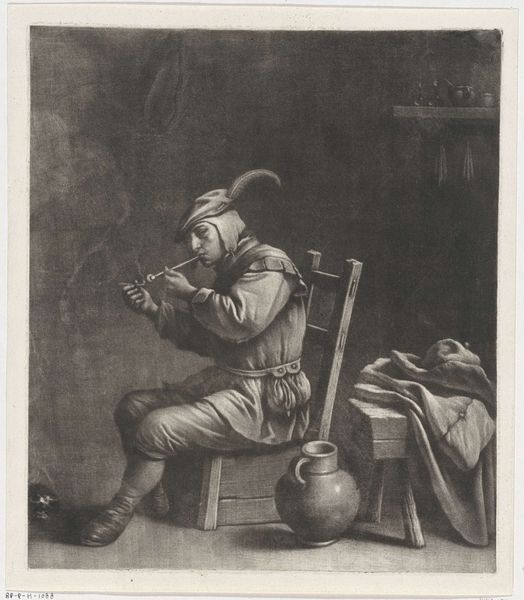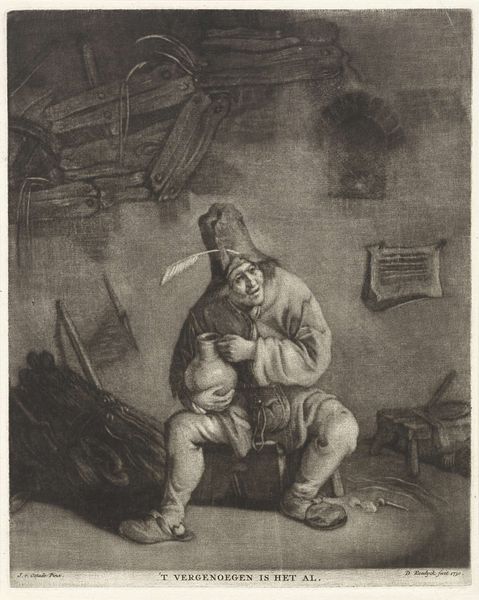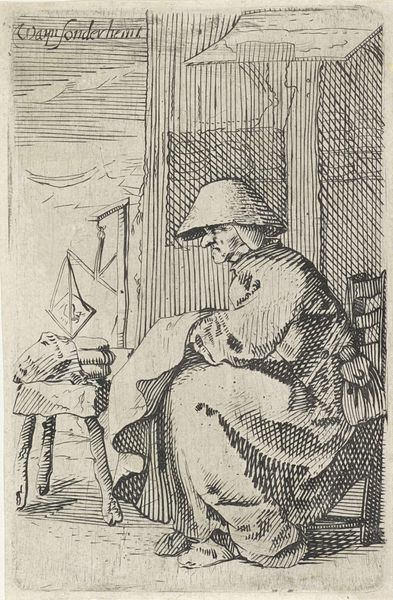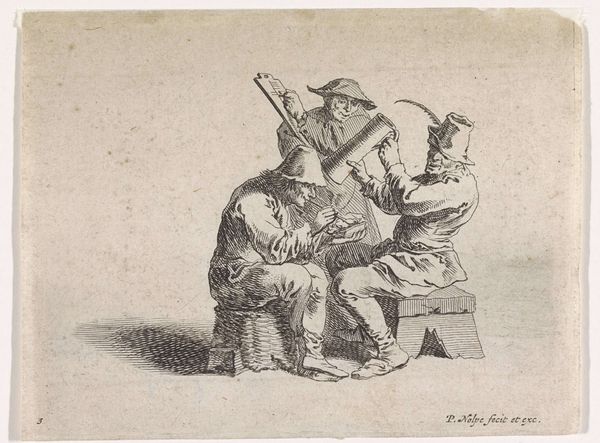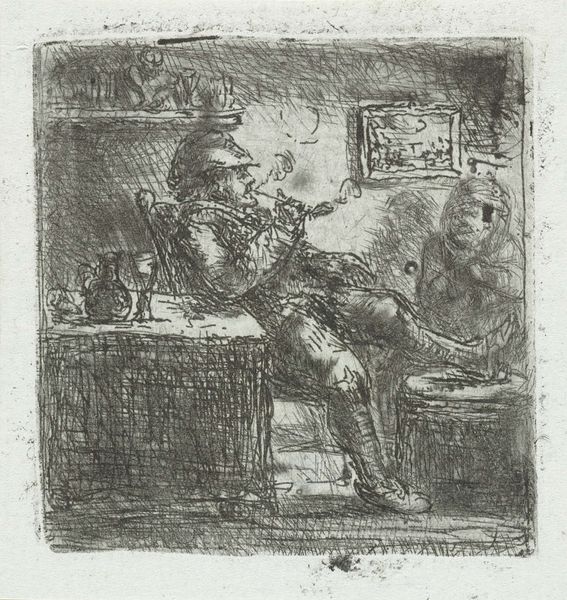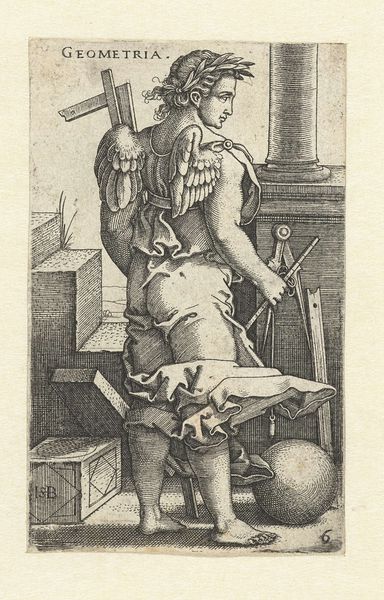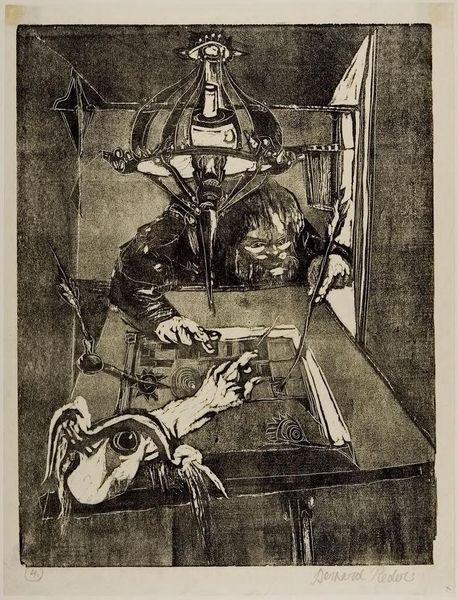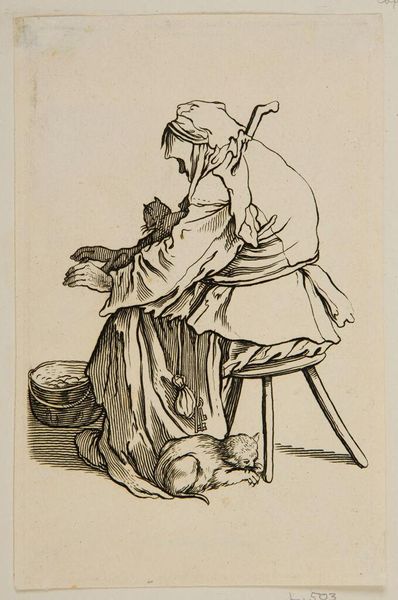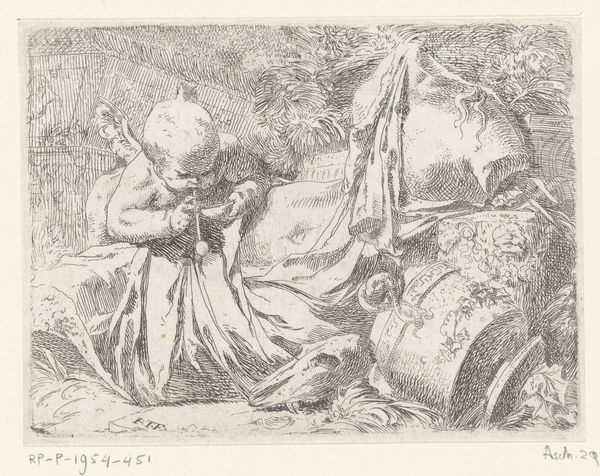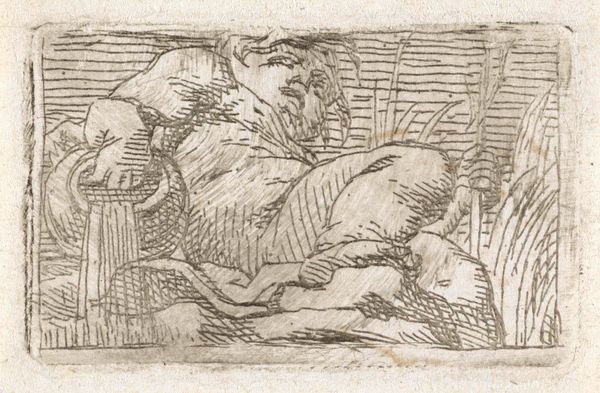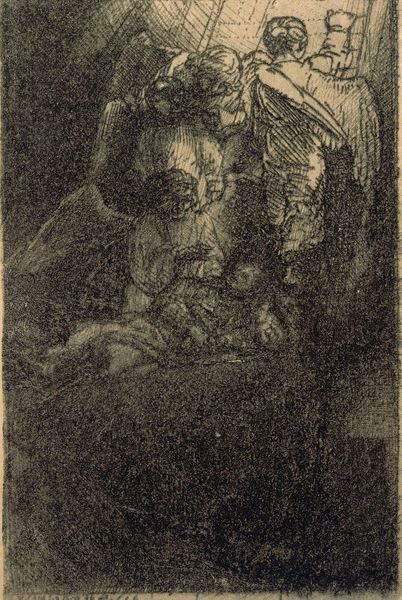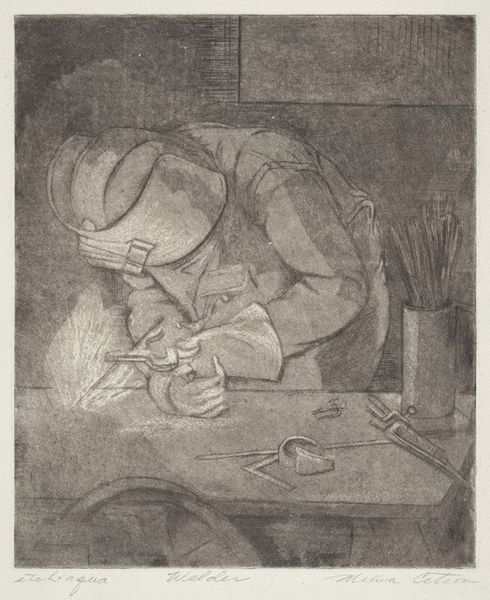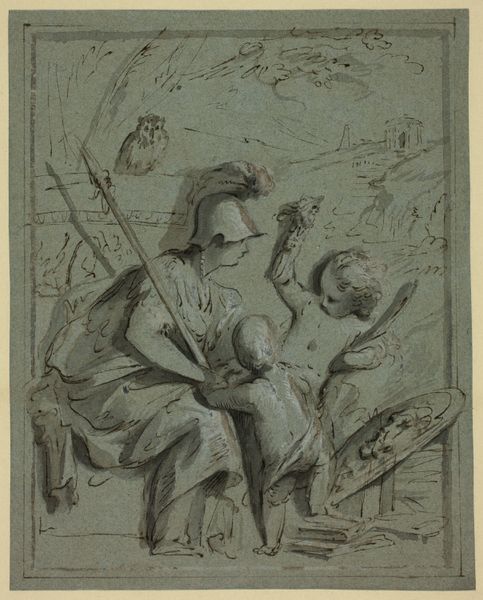
painting, oil-paint
#
painting
#
oil-paint
#
sculpture
#
oil painting
#
academic-art
#
rococo
Dimensions: 141 x 219.5 cm
Copyright: Public domain
Editor: This is Jean-Baptiste-Siméon Chardin’s "The Attributes of the Sciences," an oil painting from 1731. I am struck by the sheer density of objects, how they almost press against the picture plane. How would you unpack this composition? Curator: Observe how Chardin orchestrates this still life not as mere representation, but as an exercise in pictorial structure. Consider the arrangement: a globe, scrolls, instruments, all rendered with meticulous attention to texture and light. Note how each object relates to the others through subtle gradations of color and shadow. How does the geometric interplay, the repetition of curves and lines, affect your reading of the piece? Editor: I see, it is very deliberate, but also feels… layered. It’s not just about what is being depicted, but how. The folds in the fabric draw my eye. Curator: Precisely. Focus on how Chardin uses impasto to create a tactile surface. Notice how the light catches the edges of the objects, creating a sense of volume and depth. These formal qualities—the application of paint, the manipulation of light, the structuring of forms—these constitute the essence of the work. It becomes an interplay between flat surface and illusory depth, a tension inherent in painting itself. What do you observe about Chardin's handling of the color palette and its impact? Editor: There’s a muted, almost melancholic quality, created with all these browns and grays, but some stronger spots like the red fabric stand out more. Curator: Note how the artist balances warm and cool tones to create a subtle visual harmony. The restraint palette contributes to the painting's overall sense of calm and contemplation, yet punctuated by small accents of color which are almost musical in their effect. It reveals his intention of purely formal orchestration of color. Editor: That’s a fascinating take. I hadn't considered the color relations quite like that. It makes me see how form itself communicates so much more. Curator: Indeed. It serves to remind us of art’s potential for self-referentiality and structural exploration.
Comments
No comments
Be the first to comment and join the conversation on the ultimate creative platform.
